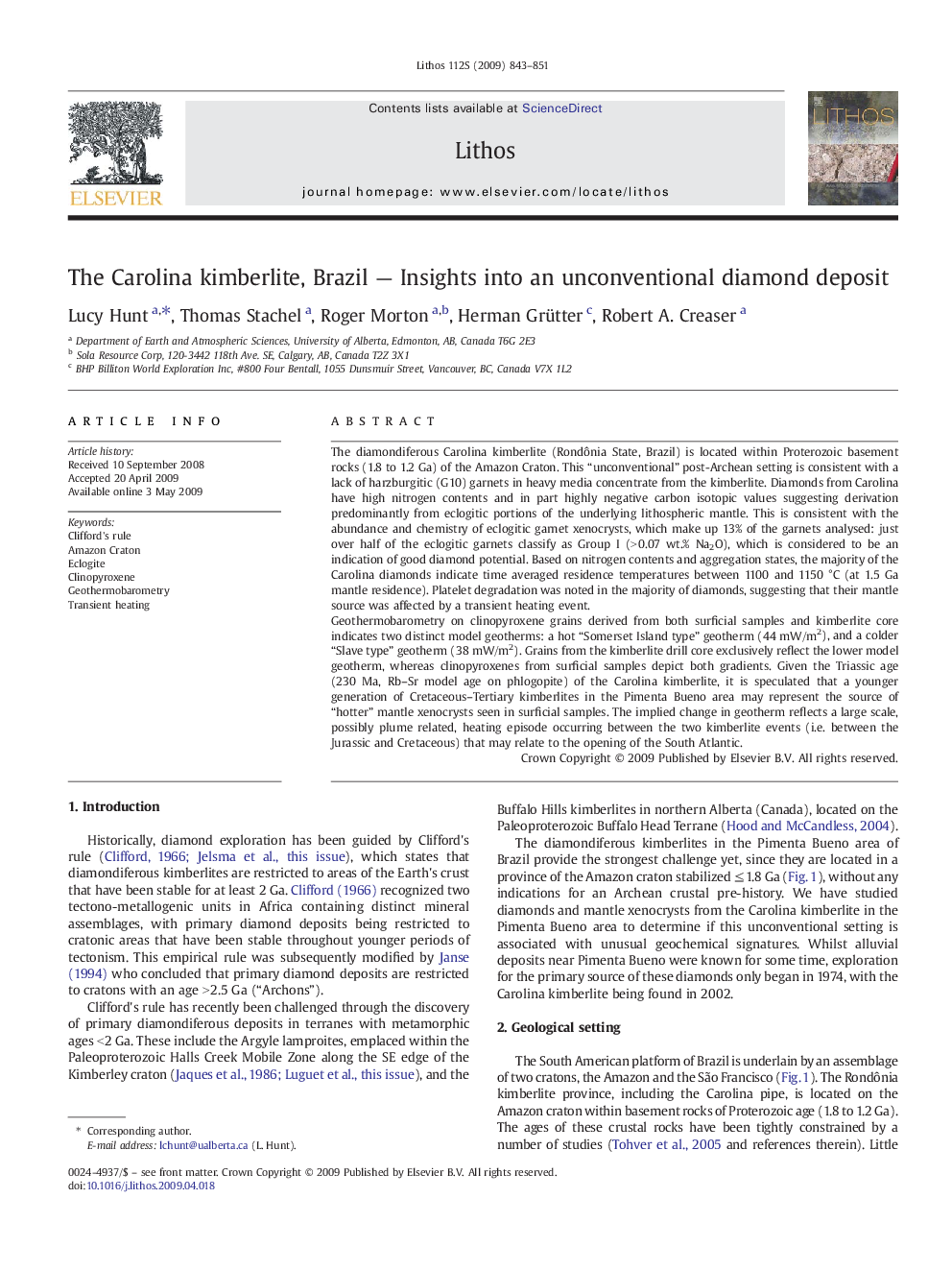| کد مقاله | کد نشریه | سال انتشار | مقاله انگلیسی | نسخه تمام متن |
|---|---|---|---|---|
| 4717196 | 1354428 | 2009 | 9 صفحه PDF | دانلود رایگان |

The diamondiferous Carolina kimberlite (Rondônia State, Brazil) is located within Proterozoic basement rocks (1.8 to 1.2 Ga) of the Amazon Craton. This “unconventional” post-Archean setting is consistent with a lack of harzburgitic (G10) garnets in heavy media concentrate from the kimberlite. Diamonds from Carolina have high nitrogen contents and in part highly negative carbon isotopic values suggesting derivation predominantly from eclogitic portions of the underlying lithospheric mantle. This is consistent with the abundance and chemistry of eclogitic garnet xenocrysts, which make up 13% of the garnets analysed: just over half of the eclogitic garnets classify as Group I (> 0.07 wt.% Na2O), which is considered to be an indication of good diamond potential. Based on nitrogen contents and aggregation states, the majority of the Carolina diamonds indicate time averaged residence temperatures between 1100 and 1150 °C (at 1.5 Ga mantle residence). Platelet degradation was noted in the majority of diamonds, suggesting that their mantle source was affected by a transient heating event.Geothermobarometry on clinopyroxene grains derived from both surficial samples and kimberlite core indicates two distinct model geotherms: a hot “Somerset Island type” geotherm (44 mW/m2), and a colder “Slave type” geotherm (38 mW/m2). Grains from the kimberlite drill core exclusively reflect the lower model geotherm, whereas clinopyroxenes from surficial samples depict both gradients. Given the Triassic age (230 Ma, Rb–Sr model age on phlogopite) of the Carolina kimberlite, it is speculated that a younger generation of Cretaceous–Tertiary kimberlites in the Pimenta Bueno area may represent the source of “hotter” mantle xenocrysts seen in surficial samples. The implied change in geotherm reflects a large scale, possibly plume related, heating episode occurring between the two kimberlite events (i.e. between the Jurassic and Cretaceous) that may relate to the opening of the South Atlantic.
Journal: Lithos - Volume 112, Supplement 2, November 2009, Pages 843–851